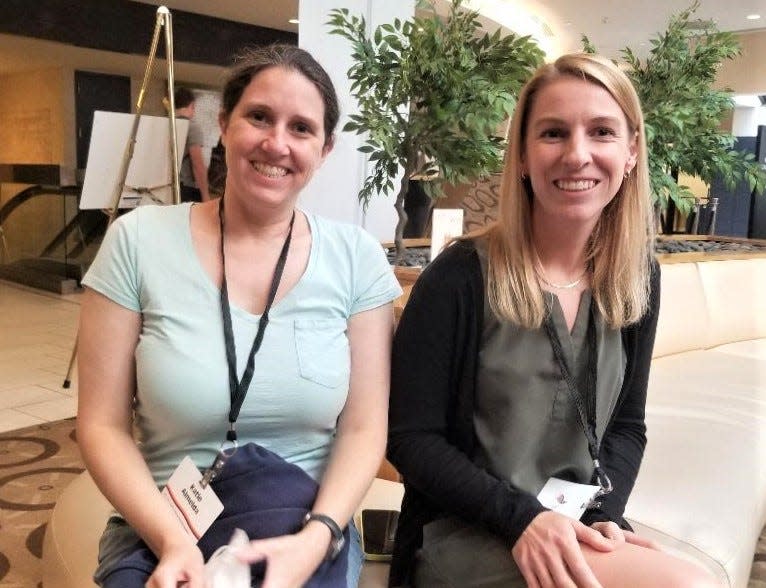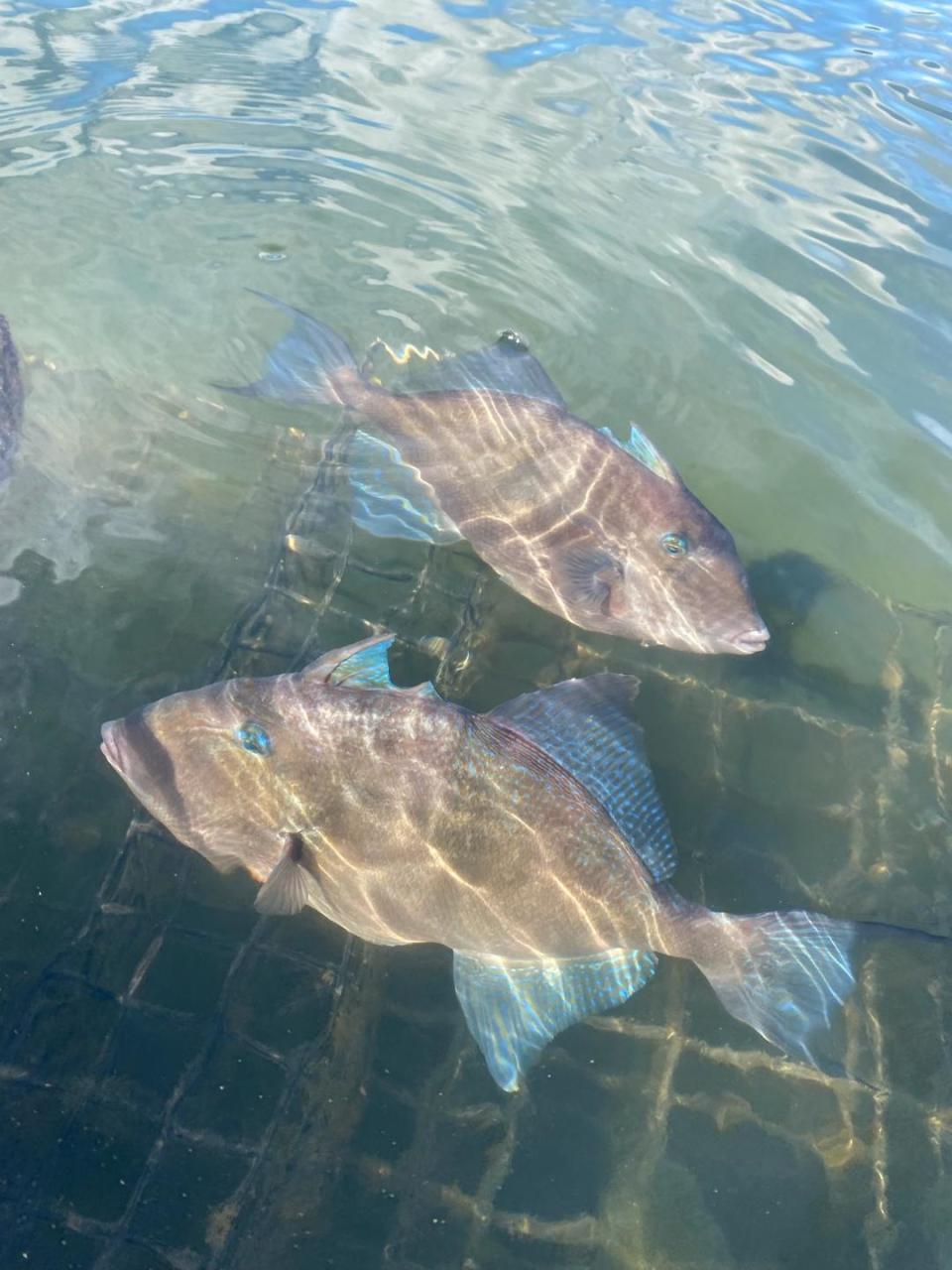Fishing Report: Workshop aims to predict climate change scenarios

Climate change impacts on East Coast fisheries are hard to figure. What will happen as temperatures rise, with ocean acidification, sea level rise, habitat degradation and the other climate factors that could affect access, fish, anglersand fishing communities?
I was honored last week to be invited to try to help figure things out at the East Coast Climate Change Scenario Planning Creation Workshop in Arlington, Va.
Seventy-five participants from commercial and recreational fishing; climate, social and fisheries scientists; representatives of non-governmental organizations; community leaders; and fisheries managers met for three days of collaboration in an attempt to illustrate what the future might hold in the next 20 years.
Fishing Report: Warming water affects bluefin tuna limits
Fishing Report: Now's the time to fund NOAA's climate-change battle
Preparing fishing communities for change
Scenario planning is an approach that helps people and organizations prepare for uncertain futures. We cannot be sure of the precise nature of the changes to come. The planning workshop aims to produce possible scenarios or stories, then it will be a matter of selecting which ones are likely to happen and plan for them.
The workshop was the culmination of three East Coast Climate Change Scenario Planning sessions, which garnered input from hundreds of scientists, fish managers and fishers to help frame the session in which we participated this week.
The initiative is being conducted by the National Oceanographic and Atmospheric Administration Fisheries and its East Coast partners — the New England, Mid-Atlantic and South Atlantic Fishery Management Councils as well as the Atlantic States Marine Fisheries Commission.
Robert Beal, executive director of the Atlantic States Marine Fisheries Commission, helped kick off the workshop. The ASMFC sets regulations along the coast for fish in state waters out to the 3-mile limit. “Planning fisheries for climate change is a complex subject," Beal said. "We have three different council jurisdictions and the ASMFC with geographic boundaries and the fish, as we know, do not care about the boundaries, so it is important that we collaborate on possible scenarios.”
Fishing Report: Fluke bite on the rise in Sakonnet River and the Bay
The aim of the session was not to generate and agree on solutions but to consider what challenges and opportunities we might face over the next 20 years. What will change? What will stay the same? What do we expect to happen? And what could surprise us?
The initiative is designed to prepare fishing communities and managers for an era of climate change. The focal questions at the workshop included: How might climate change affect stock distribution, availability and other aspects of East Coast marine fisheries over the next 20 years?
Vanishing: The demise of winter flounder in Narragansett Bay
The next phase of the initiative will be to use select scenarios to explore consequences for fisheries governance and management and to consider changes that may be beneficial under a range of different future conditions.
For details on the initiative, visit https://www.mafmc.org/climate-change-scenario-planning.
Where’s the bite?

Striped bass and bluefish
“The bass bite in the Providence River is great," said Dave Henault of Ocean State Tackle in Providence.
“Fishing for striped bass and bluefish for customers has been outstanding," said Tom Giddings of the Tackle Box in Warwick. "From the Providence River and down the East Passage, anglers are catching nice slot-size fish in the 30- to 32-inch range with poggies, trolling umbrella rigs and tube and worm. And the bluefish are great, too, with 30-inch fish often being caught.”
John Littlefield of Archie’s Bait & Tackle in East Providence reported: “I have not seen the striped bass bite this good in terms of size of fish and numbers in many years. Maybe the conservation measures are working. Customers are catching slot-size fish [28 inches to less than 35 inches] from Crescent Park all the way up to the Hurricane Barrier in Providence. Anglers are catching them from shore at Sabin Point and Kettle Point in East Providence, and by boat using Atlantic menhaden. And one customer caught over 40 fish trolling tube and worm.”
Declan O’Donnell of Misquamicut Bait & Tackle in Charlestown said: “The salt ponds continue to hold good numbers of mostly small fish, which are a blast to catch off light tackle and fly-fishing outfits. Some anglers have been having good luck catching slot fish by casting unweighted eels in the pond during the evening. The breachways and beaches are producing a mix of sizes with plenty of slot and above-slot fish being caught. Out at Block Island, some really nice-sized fish have been reported from the ledge. There are still bluefish mixed in with the bass both locally and out at the island.”
Summer flounder, black sea bass and scup
“Everyone is targeting striped bass but we have had a few customers pick up keeper fluke in the Warwick Light areas," Littlefield said. "And the scup bite has improved with a few black sea bass keepers being caught from shore at Colt State Park.”
Giddings reported: “The scup have been huge. I have seen anglers with 19-inch scup caught in the Bay.” O’Donnell reported: “Fluke fishing has been slowly improving. A lot of shorts — my suggestion is to move away from the fleet and try bigger baits to weed out the smaller fish. Black sea bass have been on the small side locally with some larger fish out around Block Island. This bite should only pick up from here. Scup are moving in pretty thick and can be caught from both shore and boat.” Anglers are reminded that the minimum size for black sea bass is now 16 inches.
Freshwater fishing
Freshwater fishing for largemouth bass has been good. “I had three young men buy shiners to target bass at Roger Williams Park [Monday] morning," Littlefield said. Giddings said: “Fishing for largemouth has been good. One customer caught a 4-pound largemouth during a tournament at Indian Lake in South Kingstown. And the pike bite has been good at Little Pond behind Warwick Vets.”
Dave Monti holds a captain’s master license and charter fishing license. He serves on a variety of boards and commissions and has a consulting business that focuses on clean oceans, habitat preservation, conservation, renewable energy and fisheries-related issues and clients. Forward fishing news and photos to dmontifish@verizon.net or visit noflukefishing.com.
This article originally appeared on The Providence Journal: Fishing Report: Planning for climate change impacts on the East Coast

